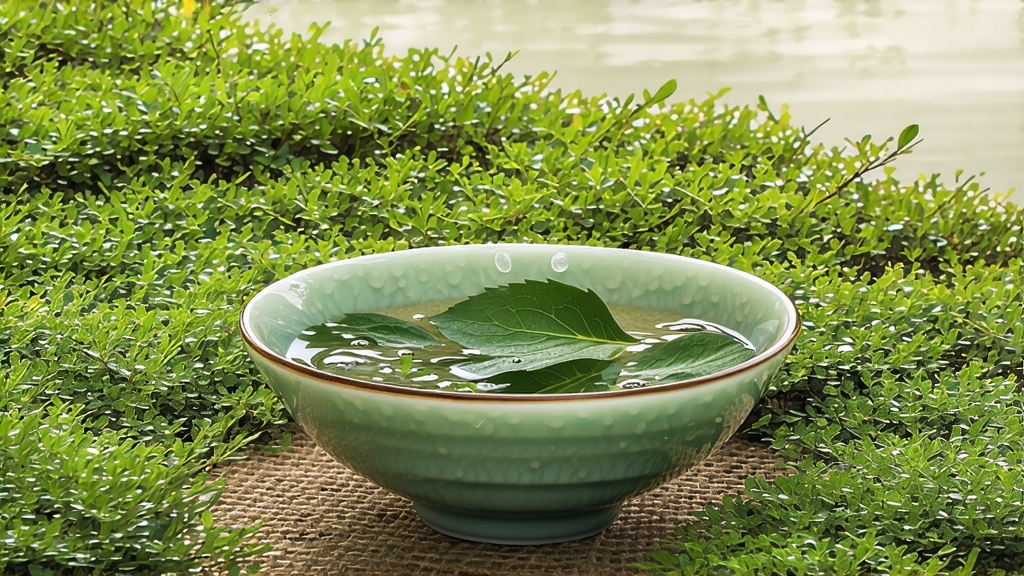
Longjing, literally “Dragon-Well,” is the most celebrated among China’s more than one thousand green-tea styles. Its fame rests not on legend alone but on a convergence of soil, micro-climate, cultivar, and human skill that has been refined for well over a millennium. To understand why a single sip can taste like sweet spring water, fresh garden peas, and roasted chestnuts all at once, one must follow the leaf from Tang-dynasty stone inscriptions to the quiet pre-dawn hours of modern Hangzhou, when pickers still climb the terraced slopes of Lion Peak.
History and terroir
The earliest written record appears in Lu Yu’s Classic of Tea (760 CE), which lists the “well of the dragon” among the water sources worthy of brewing. By the Song dynasty, Buddhist monks at the Yongfu Temple were already gifting compressed cakes of local tea to the emperor; the switch to loose leaf came during Ming times, when the imperial court moved to nearby Nanjing and demanded fresher, greener tastes. The Qing Qianlong Emperor’s visit in 1751 sealed Longjing’s fate: after watching village women pluck leaves at Hugong Temple, he pocketed a handful and, returning to Hangzhou, planted the shoots himself beside the famous well. The eighteen bushes he supposedly designated still survive, fenced yet unpruned, a living monument that fetches higher prices per gram than silver.
Geographically, authentic West Lake Longjing occupies a narrow oval of hills no larger than 2,200 hectares. The lake acts as a thermal reservoir, releasing night-time warmth and generating morning mist that filters ultraviolet light. Granitic soils drain quickly while retaining just enough moisture; the pH hovers at 4.5–5.5, ideal for tea’s preferred ammonium-nitrogen uptake. Within this zone, five micro-terroirs are recognized: Lion (Shi), Dragon (Long), Cloud (Yun), Tiger (Hu), and Plum (Mei). Each slope differs in aspect, elevation, and diurnal temperature swing, yielding leaves whose amino-acid-to-catechin ratio varies by as much as 18 %, enough to shift the cup from asparagus-sweet to hazelnut-savory.
Cultivars and picking calendar
Although more than forty Camellia sinensis var. sinensis clones are grown in Zhejiang, only three are legally permitted for authentic West Lake Longjing: the traditional Longjing #43, the heirloom Qunti (population) bush, and the newer Zhongcha 108. #43, a 1960s selection, germinates earlier and offers a uniform jade-green appearance beloved by exporters, yet connoisseurs prize Qunti for its lower yield and deeper, more complex aromatics. Picking begins around Qingming (early April) when overnight temperatures stabilize above 10 °C. The standard is “one bud with one unfolding leaf,” no longer than 2.5 cm, plucked between 5 a.m. and 9 a.m. while dew still glistens. A skilled picker fills only 500 g of fresh leaf in four hours, the first step in what will become 100 g of finished tea.
Craft: the art of pan-firing
Within minutes of plucking, the leaf is delivered to the village workshop where it is spread in bamboo trays and left to wither for two to four hours, reducing moisture from 75 % to roughly 68 %. What follows is pan-firing (shaqing), a choreography of heat, pressure, and timing that has no parallel in other green teas. A cast-iron wok is pre-heated to 280 °C, then brushed with a slurry of tea oil and local beeswax to season the surface. The firer tosses in 250 g of leaf and, within seconds, presses the mass against the wok with bare fingers, curling and tucking the shoots into the characteristic flat, sword-like shape. Temperature is modulated by feel: too high and the leaf scorches, too low and grassy volatiles remain. Ten minutes later the wok cools to 80 °C and the action shifts to a repeated “抓、抖、搭、拓” (grasp, shake, set, extend) rhythm that lasts another twenty minutes. When the leaf exits the wok it contains only 6 % moisture, yet retains a suppleness that allows further hand-sorting without breakage. No rolling drums, no hot-air tunnels—just muscle memory transmitted through 1,